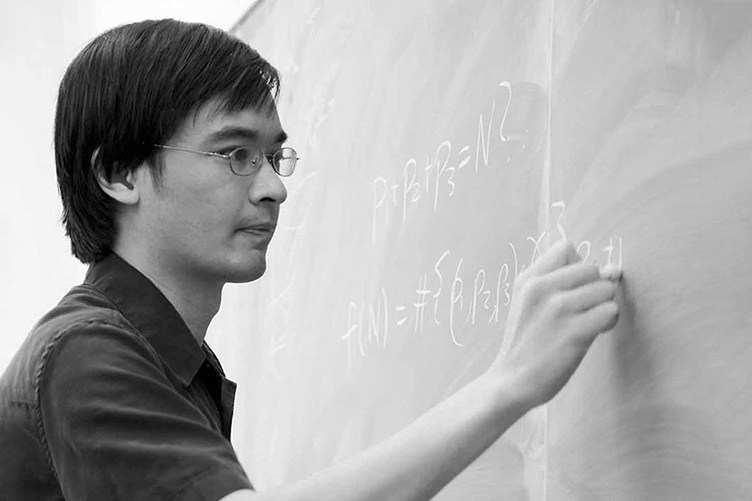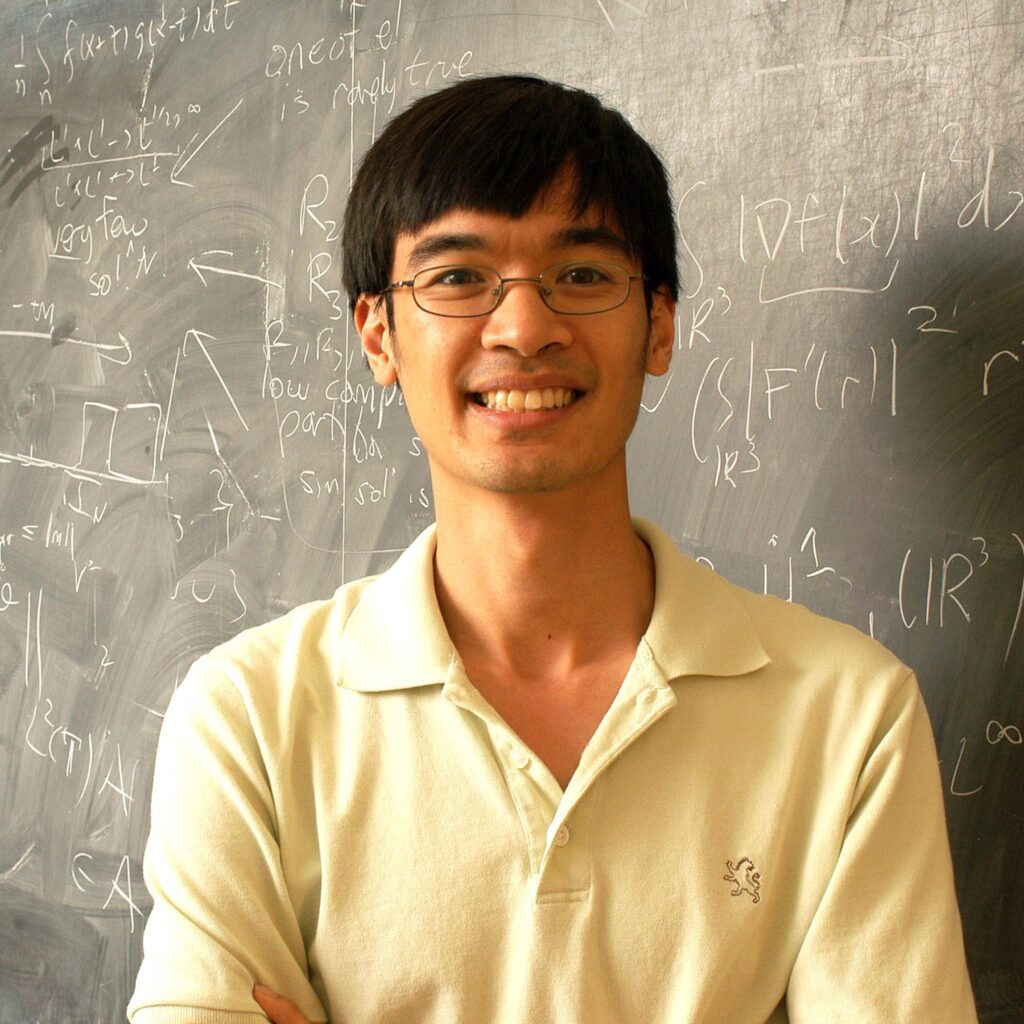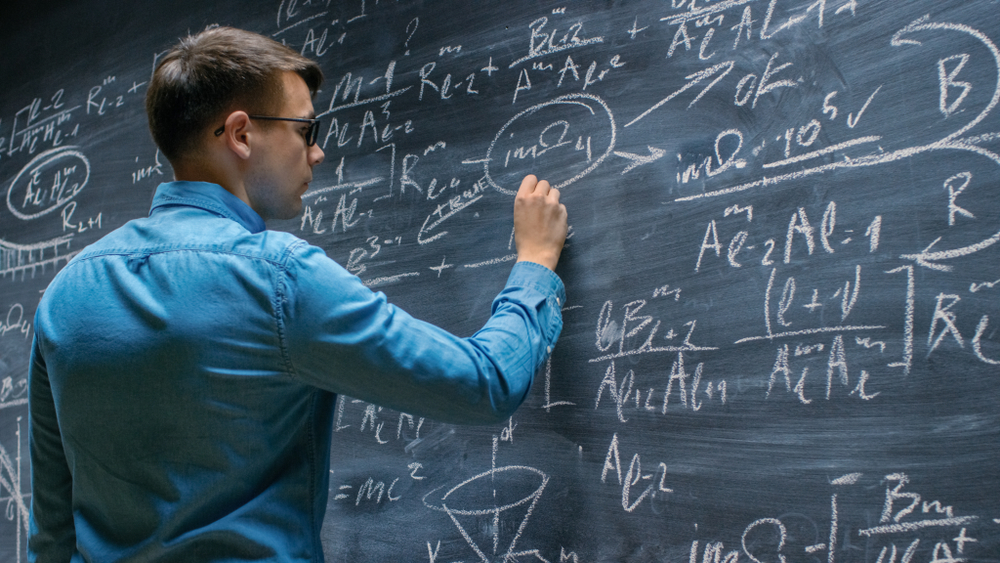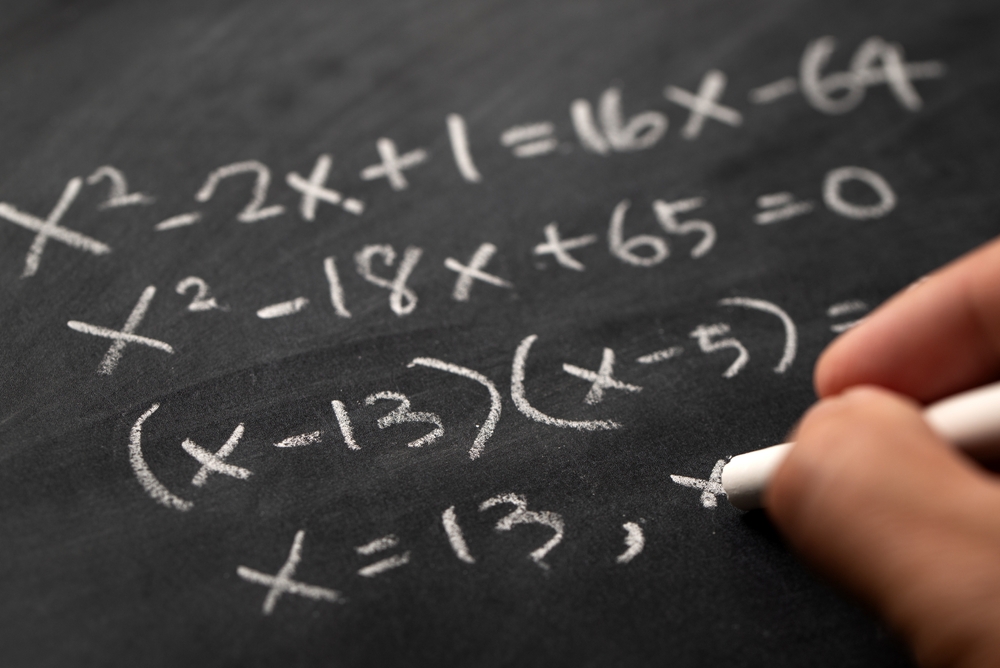Your cart is currently empty!
This Is Terence Tao. His IQ Is 230, and He’s Officially Recognized as the Smartest Person in the World

Numbers have a way of revealing hidden truths, but only a few people can truly unlock their mysteries. Terence Tao is one of them. With an IQ that pushes the boundaries of human potential, he has been captivating the mathematical world since childhood. Long before most of his peers could grasp algebra, Tao was delving into university-level equations with effortless precision.
Early Life and Academic Journey
Terence Tao’s exceptional mathematical abilities were evident from a young age, setting him apart as a prodigy. Born on July 17, 1975, in Adelaide, Australia, he grew up in an intellectually nurturing environment. His father, Billy Tao, a pediatrician, and his mother, Grace, a physics and mathematics teacher, recognized his talent early. According to the University of St Andrews’ School of Mathematics and Statistics, by the age of two, Tao was already demonstrating an advanced understanding of numbers, and by nine, he was enrolled in university-level mathematics courses.

Tao’s rapid academic progress and extraordinary capabilities attracted widespread attention. Academics studied his abilities with astonishment throughout his childhood as he achieved unprecedented results in IQ tests and the International Mathematical Olympiad. Miraca Gross, an authority on gifted education, described his IQ as “off the scale,” noting that Tao perceives mathematics in ways that others cannot. By the age of eight, he achieved a score of 760 on the SAT math section, an extraordinary feat that placed him in the national spotlight. He continued to excel on the global stage, earning a bronze medal in the International Mathematical Olympiad (IMO) at ten, a silver at eleven, and a gold at twelve—becoming one of the youngest ever to achieve such honors.
By sixteen, Tao had completed both his bachelor’s and master’s degrees in mathematics at Flinders University, mentored by Professor Garth Gaudry. Reflecting on Tao’s brilliance, Gaudry noted how remarkable his abilities were compared to any other student he had encountered. Tao then pursued his Ph.D. at Princeton University under the guidance of Elias Stein, focusing on harmonic analysis. By the age of 20, he had successfully completed his dissertation, further solidifying his reputation as one of the most promising mathematicians of his time.
In 1996, Tao joined the University of California, Los Angeles (UCLA) as a faculty member. Just three years later, at the age of 24, he became the youngest full professor in UCLA’s history. His appointment underscored his intellectual prowess and his exceptional ability to articulate complex mathematical concepts with clarity and depth. Joseph Rudnick, the dean of Physical Sciences at UCLA, described Tao as “arguably the world’s best mathematician,” adding that other mathematicians speak of him in “tones of awe,” with talents that are considered “other-worldly.”
Groundbreaking Contributions to Mathematics
Terence Tao has significantly advanced various mathematical fields through his profound contributions:

Green–Tao Theorem: In 2004, Terence Tao and Ben Green proved that the sequence of prime numbers contains arbitrarily long arithmetic progressions. This groundbreaking result connected number theory and combinatorics, offering deep insights into the distribution of prime numbers.
Erdős Discrepancy Problem: In 2015, Tao resolved the Erdős Discrepancy Problem, a conjecture posed by Paul Erdős in the 1930s. The problem questioned whether, for any infinite sequence of ±1, there exists a subsequence whose sum deviates from zero by an arbitrarily large amount. Tao’s affirmative solution demonstrated that such unbounded discrepancies must occur, providing a deeper understanding of the inherent irregularities in sign sequences.
Advancements in Harmonic Analysis and Partial Differential Equations
Beyond these specific problems, Tao has made substantial contributions to harmonic analysis and partial differential equations. His work has addressed fundamental questions about wave propagation and the behavior of solutions to complex equations, influencing both theoretical research and practical applications.
Awards and Recognition
Tao’s contributions to mathematics extend beyond his personal achievements. Professor Dimitri Shlyakhtenko, chair of the mathematics department at UCLA, noted that Tao’s collaborative nature has had a tremendous scientific effect. “There have been many instances where his participation in projects has led to significant breakthroughs, even on the fringes of mathematics,” he stated. Here is a chronological look at some of his most notable achievements:
- Salem Prize (2000): Awarded annually to young mathematicians for outstanding contributions in the field of Fourier series and related areas, the Salem Prize recognized Tao’s work in harmonic analysis. His research introduced new approaches to challenging problems in analysis.
- Bôcher Memorial Prize (2002): The American Mathematical Society awarded Tao this prestigious honor for his groundbreaking research in analysis, particularly his work on wave maps and the critical regularity problem. His contributions advanced the understanding of solutions to nonlinear wave equations, influencing future research in the field.
- Australian Mathematical Society Medal (2005): This medal is awarded to Australian mathematicians in recognition of their significant contributions to the mathematical sciences. Tao was honored for his outstanding achievements and international impact in various branches of mathematics, solidifying his status as a leading figure in the field
- Fields Medal (2006): Considered one of the highest honors in mathematics, the Fields Medal is awarded every four years to mathematicians under the age of 40 for outstanding discoveries in the field. Tao received this award for his contributions to partial differential equations, additive number theory, harmonic analysis, and combinatorics. His work in prime number patterns and wave equations was particularly recognized.
- MacArthur Fellowship (2006): Also known as the “Genius Grant,” this fellowship is awarded to individuals demonstrating extraordinary creativity and potential for future contributions. Tao was recognized for his innovative problem-solving abilities across various areas of mathematics, making significant advances in number theory and combinatorics.
- Crafoord Prize (2012): The Royal Swedish Academy of Sciences awarded Tao the Crafoord Prize in Mathematics for his contributions to harmonic analysis and additive number theory. This award recognizes achievements in fields not covered by the Nobel Prizes and highlights Tao’s profound influence on modern mathematical thought.
- Breakthrough Prize in Mathematics (2014): Tao was honored with this award for his numerous advances in analytic number theory, combinatorics, and harmonic analysis. The Breakthrough Prize celebrates outstanding achievements that have significantly shaped the field of mathematics and aims to inspire further innovation.
- Royal Medal (2014): Presented by the Royal Society, the Royal Medal acknowledges individuals for their exceptional contributions to scientific understanding. Tao’s work in combinatorics and number theory was recognized for its wide-ranging impact on mathematical research and beyond.
- Global Australian of the Year (2022): This recognition highlights Tao’s influence beyond academia, acknowledging his role in inspiring young mathematicians and making complex mathematical concepts accessible to the public. It celebrates his contributions to global mathematics and his efforts in promoting problem-solving at a broader level.
Terence Tao’s Mathematical Philosophy and Influence
Terence Tao’s approach is defined by a unique blend of deep intuition, collaborative effort, and a commitment to making mathematics accessible to all. Whether through his problem-solving philosophy, public engagement, or contributions to advancing mathematical knowledge, Tao has left an indelible mark on the field.

A Thoughtful Approach to Problem-Solving
Tao believes that mathematics is not just about rigorous proofs but also about developing an intuitive understanding of concepts. He emphasizes that over-reliance on formalism can sometimes obscure the deeper meaning behind mathematical ideas. In his essay “There’s more to mathematics than rigour and proofs,” he argues that a balance between intuition and rigor allows for more meaningful insights. His ability to simplify complex ideas has earned him admiration from students and professionals alike, making his work more accessible to a broader audience.
Collaboration: A Key to Mathematical Progress
Throughout his career, Tao has championed collaboration as a driving force in advancing mathematical research. He has worked with numerous scholars, often bridging gaps between different mathematical disciplines. His partnership with Emmanuel Candès led to the development of compressed sensing, a technique that revolutionized fields such as medical imaging and data processing. Tao’s belief in collective problem-solving is further demonstrated through the “Polymath Project,” an initiative where mathematicians around the world come together online to solve complex problems collectively. His collaborative spirit has been described by peers as both generous and inspiring, fostering a global network of problem-solvers. Furthermore, he has groupies, consisting mostly of math enthusiasts who fill lecture halls when he speaks. “They’re expecting some sort of lecture full of, I don’t know, some transcendence of wisdom,” Tao remarked, but he insists that his lectures are meant for serious students of mathematics. The attention often makes him uncomfortable, though he navigates it with a sense of humor and modesty.
Embracing Technology and AI
Recognizing the evolving landscape of mathematical research, Tao sees artificial intelligence as a valuable tool to complement human thinking. In an interview with The Atlantic, he likened AI models to “graduate students,” acknowledging their potential to assist in computations and large-scale problem-solving, while pointing out their current limitations in creativity and sustained learning. (Source) Tao envisions a future where AI supports mathematicians by handling routine calculations, allowing more time for creative exploration of new ideas.

Making Mathematics Accessible to All
Beyond research, Tao is dedicated to sharing his knowledge with the world. His blog, “What’s New,” serves as a defense mechanism to manage the flood of inquiries he receives. He has declined invitations for further travel, speaking engagements, editorial board positions, and collaborative opportunities, stating simply, “I get a lot of emails.” His public lectures and mentoring efforts have inspired countless students, emphasizing the beauty and practical applications of mathematics in everyday life. Colleagues have praised his ability to break down abstract concepts into digestible insights, making mathematics more relatable to a wider audience.
The Legacy of Terence Tao
Terence Tao’s journey from a gifted child to one of the most respected mathematicians in the world highlights not only his genius but also his dedication to advancing mathematical knowledge and inspiring future generations. His work not only pushes the boundaries of human understanding but also reflects a deep commitment to collaboration and education. Despite his many accolades, Tao remains grounded, always emphasizing the importance of continuous learning and the collective nature of mathematical progress. As his father once noted, “Even if you are very successful, you tend to say, ‘No, I’m just pretty average.’ ”
Featured Image from UCLA
